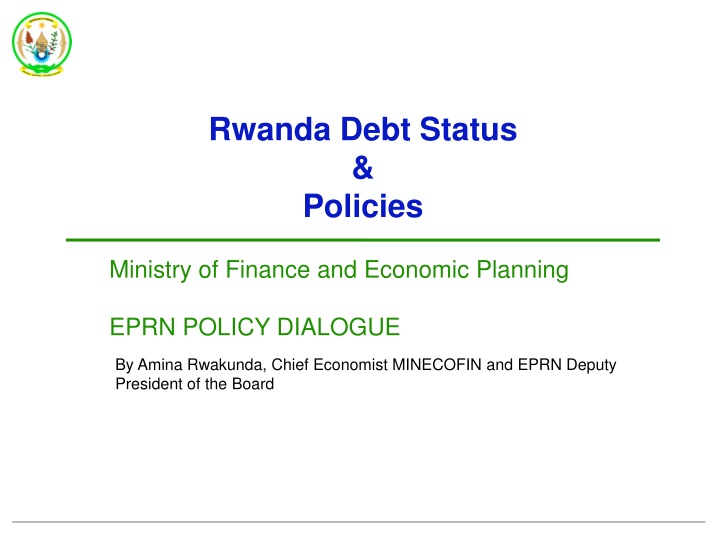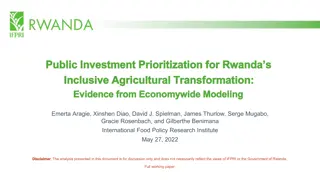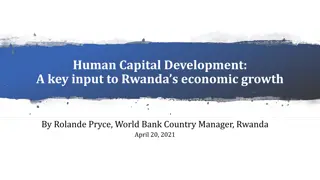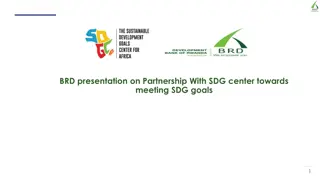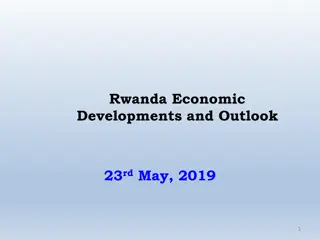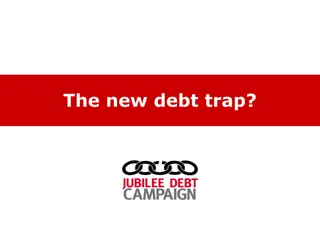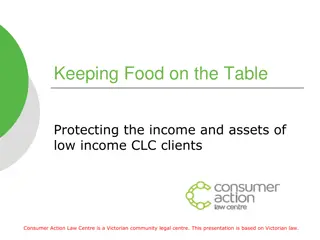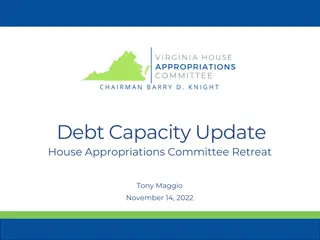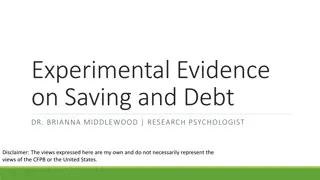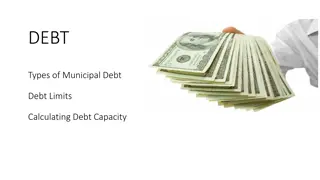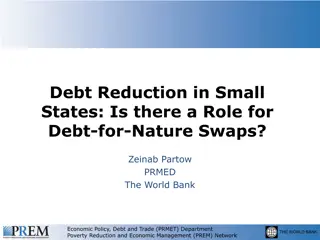Rwanda Debt Status & Policies - Ministry of Finance and Economic Planning Presentation
Rwanda's debt status and policies were discussed in a presentation by Amina Rwakunda, Chief Economist at MINECOFIN. The global context of debt, including Africa's rising debt post-relief initiatives, and the increasing vulnerabilities and causes were outlined. Challenges, recent developments, and responses to elevated debt vulnerabilities were also highlighted.
Download Presentation

Please find below an Image/Link to download the presentation.
The content on the website is provided AS IS for your information and personal use only. It may not be sold, licensed, or shared on other websites without obtaining consent from the author.If you encounter any issues during the download, it is possible that the publisher has removed the file from their server.
You are allowed to download the files provided on this website for personal or commercial use, subject to the condition that they are used lawfully. All files are the property of their respective owners.
The content on the website is provided AS IS for your information and personal use only. It may not be sold, licensed, or shared on other websites without obtaining consent from the author.
E N D
Presentation Transcript
Rwanda Debt Status & Policies Ministry of Finance and Economic Planning EPRN POLICY DIALOGUE By Amina Rwakunda, Chief Economist MINECOFIN and EPRN Deputy President of the Board
Presentation Outline 1. Debt Global Context 2. Rwanda Debt Status 1
Global Debt Total gross debt in % of GDP (source: IMF) Most indebted economies are the richer ones; 2017 300% 266% 250% Emerging market economies debt is dominated by China s debt; 200% 168% 150% 100% 77% LIC public debt is rising, in some cases reached levels close to those when countries sought debt relief. 50% 0% Advanced economies Emerging Markets Low Income countries 3
Africas Debt on the rise after multilateral debt relief initiatives (HIPC & MDRI) 4
Debt vulnerabilities are increasing - Causes 1. Scarce concessional financing(decline in aid, limited access to concessional money) while infrastructure needs and SDGs financing required are huge; 2. Low quality of public investments; 3. Weak macroeconomic conditions: recent volatility of commodity prices, as well as exchange rate, interest rates, fiscal slippages, subdued economic growth, low growth in tax revenues etc.; 4. Changing lenders landscape (share of bilateral and multilateral resources declined, some projects are not eligible for concessional financing, easy access to international market ) and growing interest bills; 5. Many countries have weaknesses in Public finances in general and limited improvement in debt management. 5
Debt vulnerabilities are increasing Ctd. Debt Risk Status, 2008 Debt Risk Status, 2008 18 18 36 2 3 2 32 2 2 6 7 5 6 4 6 7 5 7 28 6 Number of countries 6 4 9 24 9 7 7 20 17 14 13 11 4 10 21 16 19 10 15 12 6 14 8 12 12 12 12 11 9 9 4 6 6 5 5 0 2008 2009 Low 2010 2011 2012 2013 2014 High 2015 2016 2017 2018 Moderate Distress Source: IMF Debt Sustainability Analysis Low-Income Developing Countries database. Recent Developments and Outlook Challenges Macro Policies Managing th Impact of Conflict Boosting Intra-Regional Trade
Debt vulnerabilities are notably elevated - Responses 1. Further fiscal adjustment; 2. Domestic resources mobilization strategy; 3. Recovery in output growth; 4. Public finance reforms; 5. Build capacity in debt management; Strong economic growth and sound macroeconomic management are key to debt sustainability. 7
Evolution and Composition of Public Debt in % of GDP 100.0 120.0 100.6 90.0 100.0 80.0 87.5 92.8 70.0 80.0 60.0 68.0 50.0 60.0 58.4 53.6 40.0 38.5 40.0 30.0 24.9 24.5 20.0 13.1 20.0 16.315.8 10.9 10.0 4.2 0.0 0.0 2003 2004 2005 2006 2007 2008 2009 2010 2011 2012 2013 2014 2015 2016 2017 2018 Domestic Debt SoEs ext Debt/ ext. Guarantees External Debt Total Debt
Composition and structure of PPG External debt stock 120% 100% 79% 80% 60% 40% 10% 20% 11% 0% 2009 2010 2011 2012 2013 2014 2015 2016 2017 2018 Concessional o/w EuroBond o/w SOEs debt
Composition and structure of PPG domestic debt stock, ctd.
Main Risks Associated to debt portfolio 90.0 80.0 78.7 70.0 60.0 50.0 40.0 30.0 21.3 20.0 10.0 0.0 2009 2010 2011 2012 2013 2014 2015 2016 2017 2018 Debt held locally Debt held abroad
Sustainability Indicators Indicators 2018 2019 2020 2021 2022 2023 2024 Threshold PV Debt/GDP 27.7 32.5 30.4 31.7 30.6 30.2 24.7 50 PV Debt/Exports 120.2 126.3 121.3 116.4 112.7 107.1 102.4 200 PV Debt/Revenues 153.8 161.8 151.4 140.7 134.1 129.2 134.6 300 PV Debt service/ Exports 7.2 7.5 10.8 11.4 8.1 17.3 6.5 25 PV Debt service / Revenues 9.2 9.6 13.5 13.8 9.6 20.8 8.5 22
EAC Key Debt Indicators EAC Debt Indicators as of End 2018 (source: AfDB: East Africa Economic Outlook) Total External debt stock ($ billions) Debt Service/Exports (%) Debt/GDP (%) Uganda 12.5 45 17.1 Kenya 42.7 47.6 70.7 Tanzania 19.2 34.6 12.8 Burundi 0.5 14.9 21.1 Rwanda 3.9 41 7.9 14
Cost and risks indicators as of end April 2018 600,000 Millions 500,000 Domestic External 400,000 300,000 200,000 100,000 0 2019 2021 2023 2025 2027 2029 2031 2033 2035 2037 2039 2041 2043 2045 2047 2049 2051 2053 2055 Redemption Profile MTDS FY 2018-19
Policies in Place to maintain sustainable debt levels Keep a Low risk of debt distress as fiscal anchor. Maximizing external concessional; Careful prioritization during the projects selection process and their implementation; Commercial loans will only be considered as a last resort, for profitable and forex generating projects; Policy on issuance of Guarantees that can be extended to SoEs with strategic projects; Development of domestic capital market (treasury bonds issuances/re-openings).
